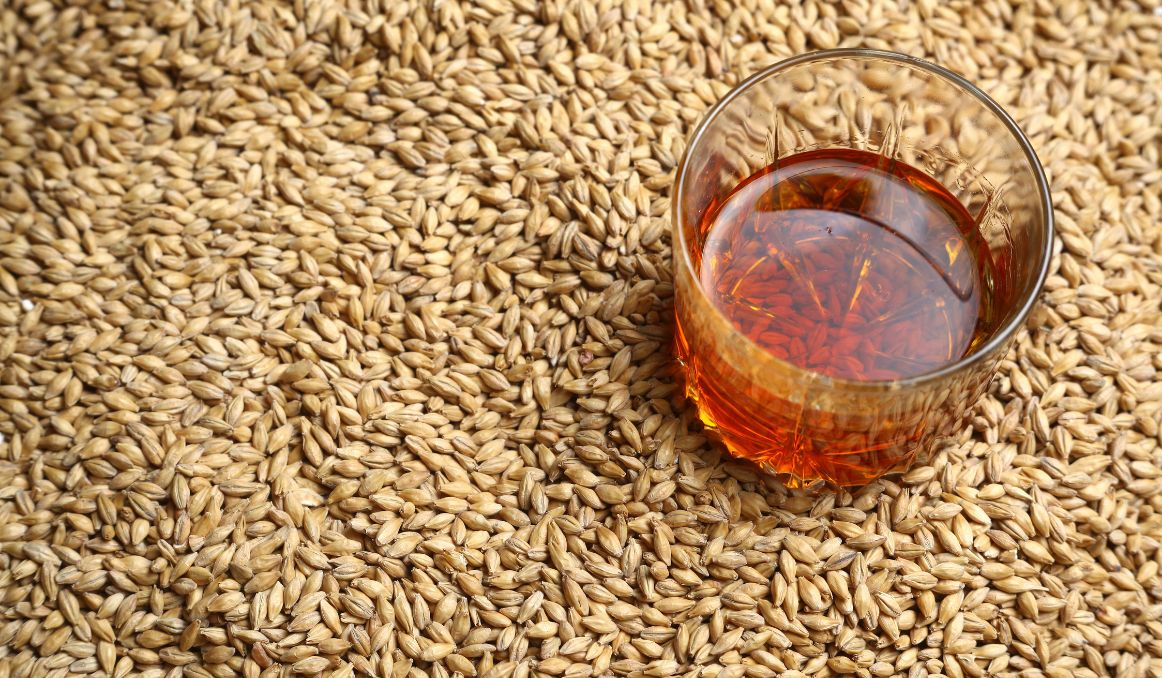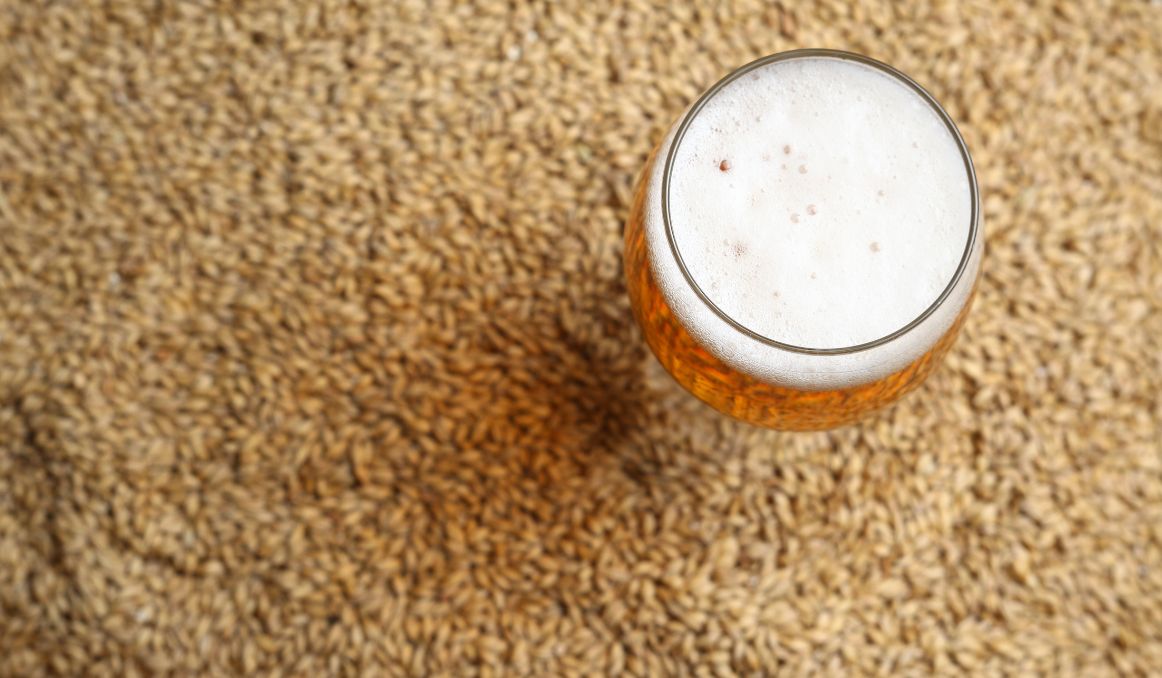Malt Beverage vs Beer: What Are the Differences?
For more than one hundred years, malt beverages have been on the market in various forms, and depending on the era, it could be a reference to something as simple as a milkshake or something as complicated as a huge bottle of beer flavored liquor.
The history of malt in the world, and in the US specifically, is a fascinating and winding one.
So, what is the difference between malt beverage and beer?
Malt

Malting cereal grains for beer is a practice that goes back thousands of years.
The malting process is simple. A grain, usually barley, but often also wheat or even oats, is soaked for days until it begins to sprout or germinate. Then it is dehydrated and roasted or kilned.
Malting grains in this way brings the full sweetness to the grain. Think of it as overripe fruit. We want this sweetness in the grain in order to make beer.
Why?
After malting, the grain is cracked or ground to allow easy access to the sugars in the grain, and then the grain is boiled and steeped in water, like tea.
That steeping allows all of the sugars in the grain to release into the water. The liquid that results at this point is now called “wort.”
Once the wort is cooled, filtered, and drained, you technically have a malt beverage.
From here, you can make a variety of different drinks.
As far back at 4000 BC in Egypt, small farmers were kilning grains to be fermented into ales.
Malt Beverages
Malt beverages have taken on a wide range of forms.
Ale and Lager
In its earliest form, malted barley, wheat, or oats served as an ale to be served with a meal. It was lightly alcoholic and had very few additives. It was nutritious and allowed drinkers to have a light buzz or euphoric effect, although it was barely an alcoholic beverage. Monks brewed ales, farmers brewed ales, and the average person with access to grains could brew ales.
Around the 1400s, Bavarian monks discovered they could make lagers as an alternative to ales. Lagers are made in the same way with the exception that they ferment in cooler temperatures and over a longer period of time.
Water Alternative
As populations grew and clean drinking water became harder to come by, a very low alcohol beverage became the best alternative to water. It was brewed to be a thick, highly nutritious beverage that had just enough alcohol to kill harmful bacteria in water and help preserve it. Every member of the family drank this ale, which was not perceived as an alcoholic drink, at meals.
Beer
The rise of beer occurred with the discovery of yeast. As Louis Pasteur discovered yeast was responsible for the fermentation, essentially the alcohol, in beer, yeast was cultivated, and separate strains were selected for brewers. Industrialization took place around the same time, and large breweries rose up to manufacture mass produced “beer” as we know it today.
Malt Milkshake
In the early 1900s, doctors began prescribing malt as an opportunity to get kids healthy. Without the alcohol, this “malt” was offered in powdered form as a cereal drink that eventually led to the rise of soda fountains around the US, where people could order different flavored “malts,” which were essentially milkshakes.
Malt Liquor
Following Prohibition in the US, brewers began experimenting with ways to make beer even less expensive and more alcoholic. Enter malt liquor. Malt liquor consumption was suddenly a thing.
Malt liquor is made with cheaper grains like corn, and it has extra sugar and usually does not have hops. This change makes for a sweeter, less bitter drink with much more alcohol. It often comes in a larger bottle as well, typically 40 ounces.
Malt Beverage vs. Beer: What Are the Differences?

When it comes down to it, the biggest difference between malt liquor and traditional beer is the flavor and the alcohol content.
Malt liquor is often thought of as “lower class” or a drink of the working classes. Someone who has little money to spend on alcohol but wants to get more drunk would opt for drinking malt liquor.
Malt liquor is also fruitier and sweeter, appealing to new drinkers at younger ages, so young adult experimenting with alcohol may tend to opt for malt liquor or a flavored malt beverage because of the absence of hops, which gives it a less bitter taste.
There is a place in the history of malt beverages for malt liquor, of course, and as a brewer it might be fun to experiment with different ways to sweetening up your wort, adding more sugar, allowing the alcoholic fermentation process to continue and raise the alcohol content.
Most beers typically have less than 5% ABV, while the final alcohol concentration of malt liquor can go up to 9% ABV or higher.
But in the end, most beer connoisseurs steer clear of malt liquor on their journey through beer taste testing as the palate does not need to be even remotely refined to pick up hints of this or that.
Malt liquor is not nuanced at all. Its express purpose is to get its drinker drunk.
In the end, it is up to the brewer and the drinker to decide which beverage is right for them. It can be fun as an explorer in the world of malt beverages to play with different flavor and aroma profiles. It would not be surprising to discover a malt liquor connoisseur exists in the world to expound upon all the wonderful varieties out there.
Something like malt liquor can also be nostalgic for those who began their malt beverage journey in a blue-collar neighborhood, enjoying this or that brand with friends and family.
Fortunately, the malt beverage world is wide and varied and available to us all. Take your time exploring beers, malt liquors, and even malted shakes, and see what works for you.
Cheers!
Are you still pitching fresh yeast every time? By reusing your yeast, you can save up to hundreds of thousands of dollars per year on just yeast alone!
Join the hundreds of brewers from all around the world using the smartest Automated Yeast Cell Counter! Request a Free Demo Account today and experience firsthand how Oculyze can take your brewery to the next level!
Sources:
- Özlem Yalçınçıray, Nilüfer Vural & Rahmi Ertan Anli, Effects of non-alcoholic malt beverage production process on bioactive phenolic compounds, Journal of Food Measurement and Characterization volume 14, pages 1344–1355 (2020)
- http://www.differencebetween.net/object/difference-between-beer-and-malt-liquor/
- https://www.allrecipes.com/article/what-is-malt-liquor/
- https://www.greatwesternmalting.com/process/history-of-the-malting-process/


